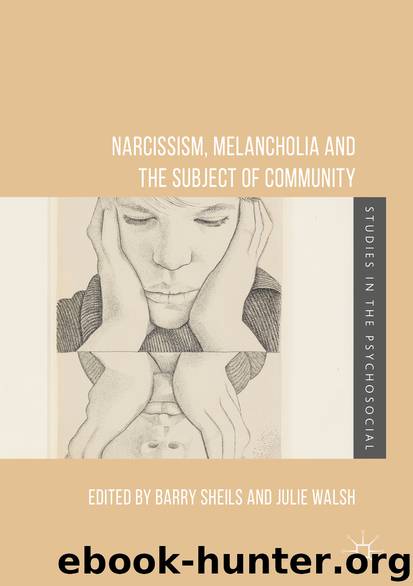Narcissism, Melancholia and the Subject of Community by Barry Sheils & Julie Walsh

Author:Barry Sheils & Julie Walsh
Language: eng
Format: epub
Publisher: Springer International Publishing, Cham
This poses a challenge—indeed, potentially, a corrective—to how we think the death drive and melancholia alike. As we have seen, the death drive need not be viewed as a type of suicidal impetus, as a literal yearning for physical death (although, of course, such features may be clinically present in melancholic subjects). We need, by contrast, to read annihilation here in a different key, as aimed not merely at the stuff of life, but at the level of the symbolic trace. Intriguingly then, the Lacanian clinician should be attentive to a type of higher-order death, to the wish (indeed, the drive) to destroy, or—less dramatically put—to evade the constraints of the symbolic pact, to secede from the ‘social life of symbolic obligations, honours, contracts, debts‘ (Žižek 1999, p. 190). Of course, such phenomena in and of themselves do not ensure a diagnosis of any sort—Lacanian diagnostics being based on structural rather than symptomatic features of a case—and yet they do provide an indication of the presence of the death drive, and, indeed potentially, as I have suggested previously, of melancholia.
The preceding discussion of the death drive does point to a useful differential diagnostic qualification. Whereas an obsessional neurotic may act out a given (repressed) conflict, repeatedly sending (an unconscious) message to the Other, a psychotic melancholic is more likely—applying here Lacan’s notion of the ‘passage to the act’ (2014)—to suspend any such performance for the Other preferring simply to act, breaking thus with the Other altogether. Indeed, building on this: whereas the obsessional would likely indulge in indecision, procrastinating vacillation (or fantasy), the psychotic is often decisive, willing to take the radical step that the obsessional shirks away from. This gives a different inflection to the diagnostic indicator so often stressed in Lacanian circles: the uncertainty and ambivalence of the obsessional neurotic is to be opposed to the certainty of the psychotic. This suggests, in turn, that the death drive might present somewhat differently in cases of obsessionality and neurosis, indeed, the very notion of the passage to the act (more typically characteristic of psychosis) implies a less moderated—unrepressed—relation to the death drive than is the case in the acting out of the neurotic.
Download
This site does not store any files on its server. We only index and link to content provided by other sites. Please contact the content providers to delete copyright contents if any and email us, we'll remove relevant links or contents immediately.
Rewire Your Anxious Brain by Catherine M. Pittman(18491)
Talking to Strangers by Malcolm Gladwell(13135)
The Art of Thinking Clearly by Rolf Dobelli(10142)
Mindhunter: Inside the FBI's Elite Serial Crime Unit by John E. Douglas & Mark Olshaker(9106)
Becoming Supernatural by Dr. Joe Dispenza(8040)
Change Your Questions, Change Your Life by Marilee Adams(7567)
The Road Less Traveled by M. Scott Peck(7475)
Nudge - Improving Decisions about Health, Wealth, and Happiness by Thaler Sunstein(7460)
The Lost Art of Listening by Michael P. Nichols(7360)
Mastermind: How to Think Like Sherlock Holmes by Maria Konnikova(7164)
Enlightenment Now: The Case for Reason, Science, Humanism, and Progress by Steven Pinker(7085)
Win Bigly by Scott Adams(7033)
The Way of Zen by Alan W. Watts(6452)
Daring Greatly by Brene Brown(6369)
Big Magic: Creative Living Beyond Fear by Elizabeth Gilbert(5556)
Grit by Angela Duckworth(5449)
Ego Is the Enemy by Ryan Holiday(5228)
Men In Love by Nancy Friday(5114)
Altered Sensations by David Pantalony(5006)
